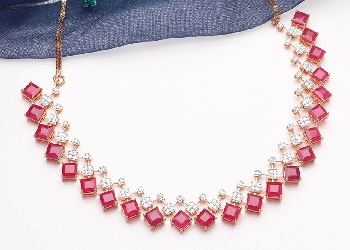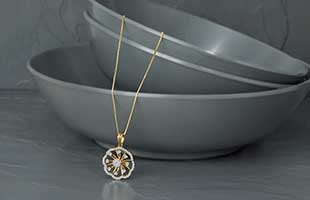Hope Diamond: Here's What you Need to Know
by Francis Alukkas | 23 November 2022 | DIAMOND JEWELLERYSince the beginning of time, diamonds have maintained an amazing attraction for people. A rare blue diamond known as the Hope Diamond is among the most famous jewels in human history. The Hope Diamond is rumored to be under a magical curse and has a fascinating history revolving around many tales of violence, mystery, and curse.
The Hope Diamond, which came from the renowned Tavernier Blue diamond, was cut in India. It is reportedly the most gorgeous blue sapphire color and is possibly the most stunning diamond in the entire world. Continue reading this full article to know more about the Hope Diamond and the History of Hope Diamond.
What is Hope Diamond?
The Hope Diamond is a rare blue diamond that was mined in India's Kollur region in the 17th century. The Hope Diamond sometimes referred to as the world's most famous diamond has resided on several continents with various owners until settling in the Natural History Museum in Washington, D.C., and is presently owned by the Smithsonian Institute.
History of Hope Diamond
According to legend, the Hope Diamond was extracted from the Kollur mines near Guntur, Andhra Pradesh, during the Golconda Empire. This precious diamond is thought to have once weighed 115 carats and is thought to have originated 1.1 billion years ago. One of the rarest gems on the earth right now. The Hope Diamond is believed to have developed 400 miles below the Earth's surface, just like other rare blue diamonds. Boron is considered to be responsible for the diamond's vivid blue color.
According to legend, the curse started with the Tavernier Blue, which was the forerunner to other great diamonds, including the Hope Diamond. The 115.16-carat blue diamond is said to have been stolen by Jean-Baptiste Tavernier, a 17th-century French gem trader, from a Hindu statue where it was acting as one of the eyes. When the priests realized it was gone, they cursed whoever might have been in possession of the jewel. After taking the diamond, Tavernier allegedly developed a high fever and soon after passed suddenly. However, according to some stories, he lived to be 84 years old. Also, Read: How to Identify a Diamond is Real or Fake?
Curse of Hope Diamond
There are several myths about the Hope Diamond's supposed curse, but very few of them have any historical basis. Tavernier, who purchased the diamond from India, is claimed to have been viciously ripped to shreds by wild dogs. It is also claimed that some of the Hope Diamond's incredibly affluent owners were killed, while others committed suicide and a select few were put to death. The diamond's temporary owner, Jacques Colot, was thought to have been cursed and ended his life as a result. According to legend, a Russian prince gave the diamond to the actress he was in love with and then shot her dead on stage before being killed by the mob.
The last queen of France and one of the original owners, Mary Antoinette, was ruthlessly executed during the French Revolution. The doomed pendant with the magnificent French Blue vanished forever from the royal collection and history due to a theft that occurred after their execution. Also, Read: Diamond Color: Must-Knows
Hope Diamond Price
The Hope Diamond is preserved in the National Gem and Mineral collection at the National Museum of Natural History in Washington, D.C., where it is currently valued at $250 million, which means the Hope diamond Price in India is R3 717 800 000. One of the most Expensive Diamonds ever is still on display in the Smithsonian's most popular exhibition.
Hope Diamond Size
For many years, 44.5 carats was the reported weight of the Hope Diamond. When it was taken out of its setting in 1974, it was discovered to really weigh 45.52 carats. Also, Read: Diamond Wedding Jewellery: A Comprehensive Buyer's Guide
The diamond's beauty is the most important source of its worth. Due to trace quantities of boron in the stone, it is covered in many facets and has a rich blue color all the way through. It is also categorized as a Type IIb diamond, the rarest variety of natural diamonds, which have extremely low levels of phosphorescence and nitrogen impurities and glow red when exposed to UV light. It is kept on display at the front of the gem collection of the Smithsonian National Museum of Natural History in Washington, D.C.
Previous Blog Next Blog








.jpg)



